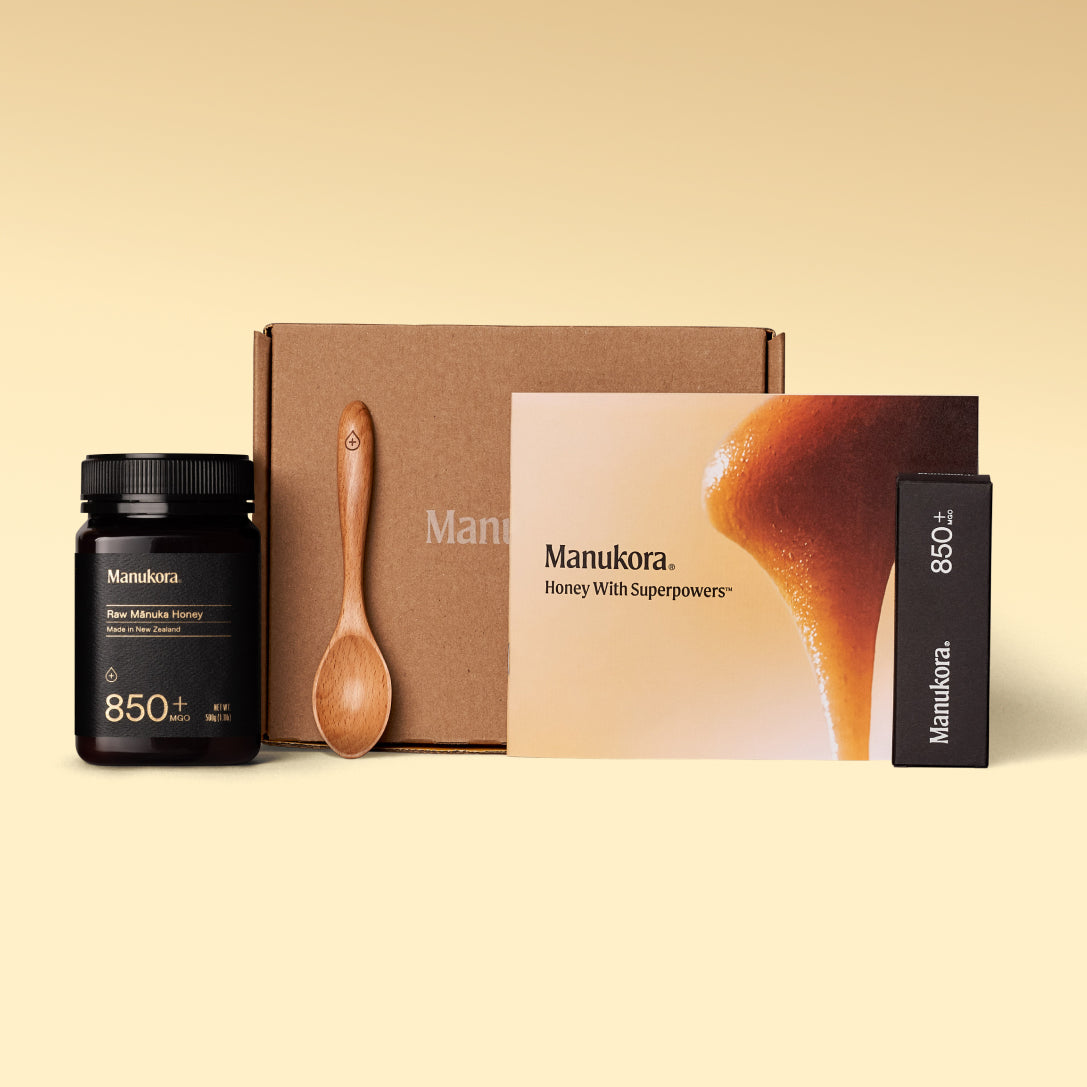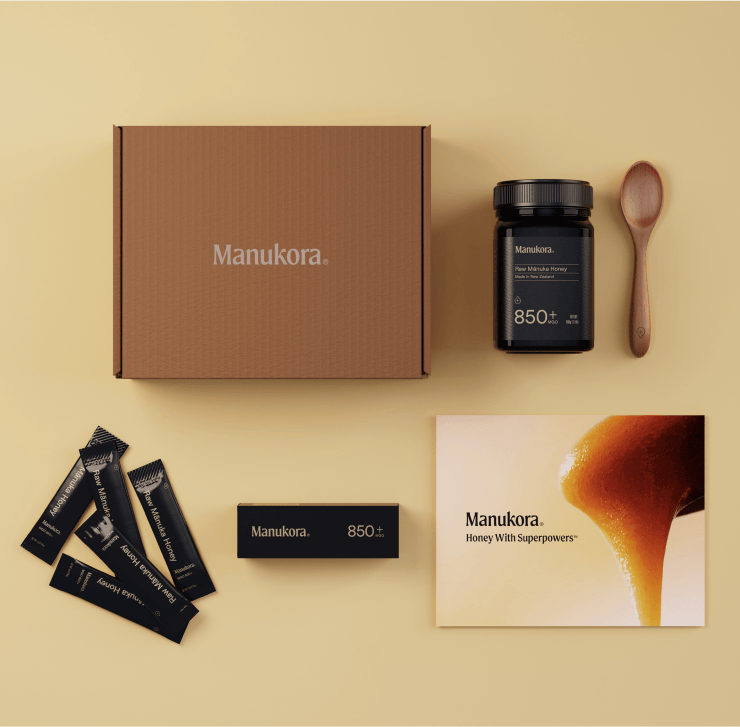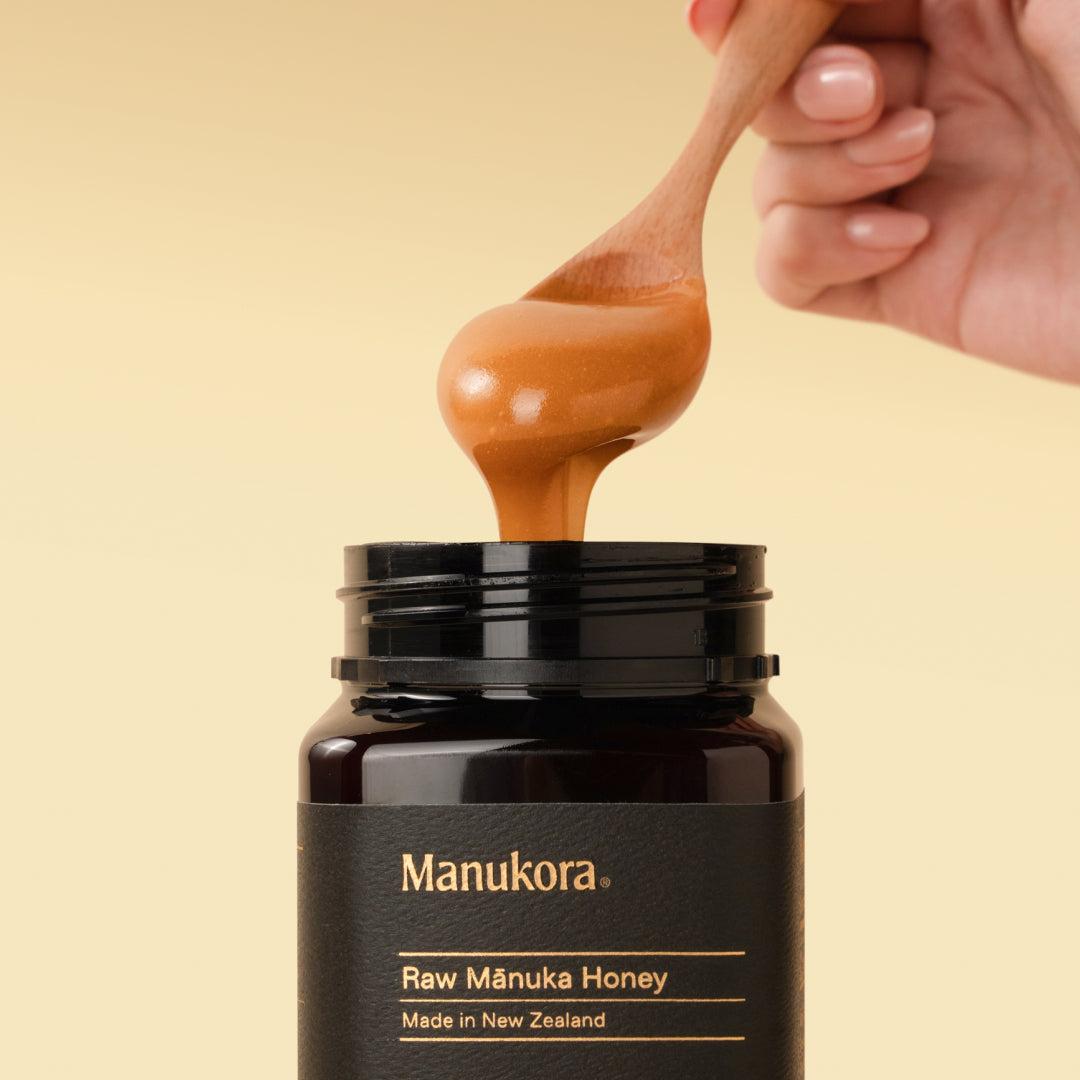Executive Summary:
-
Raw honey and pure honey are not the same.
-
Raw honey is lightly filtered and the closest you can get to honey fresh out of the hive.
-
Pure honey contains nothing but honey and is pasteurized and filtered multiple times.
-
The filtration process for pure honey can eliminate some of its beneficial nutrients, making raw honey a go-to for many health-conscious individuals.
Raw Honey vs. Pure Honey: Unveiling the Differences and Benefits
At first glance, the terms raw and pure might seem interchangeable but when it comes to honey, they represent two very different journeys from hive to jar. Raw honey is the closest you can get to honey straight from the source, often unfiltered and unheated.
In contrast, pure honey refers to honey that’s been processed for clarity, texture, and shelf stability without necessarily preserving all the natural compounds found in raw varieties.
Both types have their place, and depending on what you’re looking for like taste, consistency, or nutritional complexity, one might suit your lifestyle better than the other. In this article, we’ll break down the differences between raw and pure honey, what to expect from each, and how to make an informed choice.
What is Raw Honey?
Raw honey is honey in its most natural state, minimally filtered and not subjected to high heat or pasteurization. This gentle handling helps preserve many of the naturally occurring nutrients and compounds found in the hive.
While raw honey may be slightly strained to remove pieces of wax or honeycomb, it retains its original texture, flavor, and golden richness. This type of honey often crystallizes over time, a natural process that reflects its authenticity.
For those who value a closer connection to nature’s process, raw honey offers a more traditional experience, just as the bees intended.
Raw honey delivers a rich, unfiltered experience—closer to the hive, with minimal processing and maximum character.
Benefits of Raw Honey
Raw honey contains a unique blend of naturally occurring nutrients that support a variety of normal bodily functions. Here’s how these compounds contribute to overall well-being:
-
Supports Gut Health: Raw honey may contain enzymes like glucose oxidase and catalase, which help support a healthy microbial balance in the digestive system.
-
Aids Immune Function: Naturally occurring antioxidants in raw honey can support a well-functioning immune system and help promote overall vitality.
-
Encourages Calm and Balance: Some studies suggest that nutrients found in certain types of honey may play a role in supporting neurological balance and relaxation as part of a healthy lifestyle.
-
Helps Maintain Microbial Harmony: Raw honey contains compounds that support a balanced microbial environment and promote the body’s natural inflammatory response.
What is Pure Honey?
Pure honey refers to honey that contains no added sugars, syrups, or artificial ingredients but it does undergo more processing than raw honey. Typically, pure honey is pasteurized, meaning it’s heated above 118 degrees Fahrenheit to create a smoother, clearer appearance and extend shelf life.
After pasteurization, the honey is often filtered, sometimes multiple times, to remove air bubbles, fine particles, and natural residues like pollen or wax. This results in a more uniform consistency and crystal-clear look.
While still technically “pure,” this process may reduce or alter some of the naturally occurring nutrients found in raw honey. It’s a more refined version of nature’s golden nectar, often chosen for its smooth texture and shelf-stable properties.
Pure honey may look polished and refined, but behind its golden clarity lies a different journey—one shaped by heat and filtration.
Benefits of Pure Honey
While pure honey goes through more refinement than its raw counterpart, it still offers several appealing qualities that make it a popular choice:
-
Smooth and Consistent Texture: Thanks to pasteurization and fine filtration, pure honey has a clear, uniform appearance that’s free from air bubbles or visible particles—ideal for those who prefer a polished look and pourable consistency.
-
A More Natural Sweetener Option: Compared to many processed sweeteners, pure honey remains a naturally derived alternative. It’s often chosen by those seeking to reduce their reliance on refined sugars.
-
Accessible and Budget-Friendly: Pure honey tends to be more affordable than raw or high-grade specialty honeys, making it a convenient option for everyday use.
Raw honey contains naturally occurring compounds that can support gut health, immune balance, and sustained energy when enjoyed daily.
Raw vs. Pure Honey: Key Differences to Consider
Choosing between raw and pure honey comes down to your preferences for texture, sourcing, and intended use. While both are made by bees and contain no added sugars or syrups, their processing methods—and resulting characteristics—can differ quite a bit. Here’s a closer look at how raw and pure honey compare:
1. Price and Accessibility
Raw honey, especially when sourced from remote regions or crafted using traditional practices as in the case of premium honeys like Manuka tends to carry a higher price point. This reflects the minimal processing and care taken to preserve its natural qualities. On the other hand, pure honey is typically more affordable and widely available, making it a practical option for everyday use.
2. Appearance and Texture
The processing method plays a major role in how each type of honey looks and feels.
-
Raw honey is usually opaque, may crystallize naturally over time, and can contain flecks of pollen or wax. Its texture may be creamy, thick, or even slightly gritty offering a more authentic, straight-from-the-hive experience.
-
Pure honey, in contrast, is pasteurized and finely filtered to achieve a clear, golden hue with a consistently smooth pour. This makes it more visually familiar to most store-bought honey users.
Processing defines more than just texture, it influences what nutrients remain in your jar.
3. Nutrient Preservation and Function
One of the distinguishing traits of raw honey is its minimal heat exposure, which helps retain many of the naturally occurring nutrients, enzymes, and compounds. These nutrients contribute to supporting various aspects of wellness such as digestive health, immune function, and microbial balance when consumed consistently as part of a healthy lifestyle.
Pure honey, while still free from additives, is typically pasteurized. The heating process may reduce the presence or activity of certain naturally occurring compounds, which is why some wellness-focused consumers prefer raw varieties.
4. Nutritional Content
In terms of calories and sugars, raw and pure honey are quite similar. A typical serving around one tablespoon (approximately 17 grams) contains:
-
~60 calories
-
~17 grams of natural sugar
Regardless of type, honey is an energy-dense food and should be consumed mindfully, especially for those monitoring sugar intake.
Choosing the Right Honey for You
Choosing honey isn’t just about taste—it’s about knowing where it comes from and how it’s made.
Whether you opt for raw or pure honey depends on how you plan to use it and what qualities matter most to you. Both types have their place in everyday routines:
-
If you're seeking a smooth, budget-friendly option to use as a naturally derived sweetener in beverages or recipes, pure honey might be a practical choice. Its consistent texture and clarity make it easy to drizzle or stir.
-
If you're looking for a honey that’s been minimally processed and contains a broader range of naturally occurring nutrients often sought out for supporting general wellness or digestive health, raw honey may be more aligned with your goals.
Ultimately, the best choice comes down to your lifestyle, preferences, and how honey fits into your daily routine. Understanding the differences can help you make a more informed and enjoyable decision.
Manukora’s Commitment to Quality
At Manukora, our mission is to craft premium, traceable Mānuka honey that supports a health-conscious lifestyle while honoring the bees, the land, and traditional beekeeping practices.
From placing our hives deep in the remote forests of New Zealand to using minimal, respectful processing techniques, every step of our process is designed to preserve the natural integrity of the honey. We avoid excessive heat, pasteurization, and ultra-fine filtration so what ends up in the jar stays as close as possible to how nature created it.
From ethical beekeeping to traceable sourcing, Manukora preserves the purity of Manuka honey—without compromise.
The result is a rich, golden honey that contains naturally occurring nutrients known to support immune health, aid digestive balance, and provide clean energy making it a thoughtful addition to your daily routine.
And with every jar, you can scan the QR code to trace your honey back to its source and meet the beekeeper behind it. It’s all part of The Art of Ethical Beekeeping™, and it’s what makes Manukora truly special.
Frequently Asked Questions
Is raw honey better than pure honey?
Not necessarily it depends on what you’re looking for. Raw honey is minimally processed and retains more naturally occurring nutrients, which may support general wellness. Pure honey is more filtered and pasteurized, making it smooth and shelf-stable. Each has its place depending on your preferences.
Can raw honey support immune and digestive health?
Raw honey contains naturally occurring compounds that can support a healthy immune system and aid digestive balance when consumed regularly as part of a wellness routine.
Does pure honey have the same nutrients as raw honey?
Pure honey may undergo heating and finer filtration, which can reduce or alter some of the natural compounds found in raw honey. While it still offers naturally derived sweetness, it may not retain the same nutrient profile.
How can I tell if honey is raw or pure?
Raw honey is often labeled as such and may appear cloudier or crystallized due to minimal processing. Pure honey typically has a smooth, clear appearance from pasteurization and filtration. Always check the label for processing details or certifications.
Is Manuka honey considered raw or pure?
High-quality Mānuka honey, like Manukora’s, is typically minimally processed to preserve its natural nutrients and maintain authenticity. It’s often closer to raw honey in form, crafted to support overall wellness through careful sourcing and gentle handling.
What is MGO, and why does it matter in honey?
MGO (methylglyoxal) is a naturally occurring compound found in Mānuka honey, responsible for many of its unique properties. Higher MGO levels reflect a higher concentration of these compounds, which can support microbial balance and immune function.
Final Thoughts
From processing methods to texture and nutrient preservation, each type offers a unique experience. Gaining insight into these nuances can help you choose the option that best fits your lifestyle and preferences.
If you're someone who values authenticity and quality in every spoonful, consider exploring our Manuka Honey 20+ MGO850. It’s a premium choice for those who appreciate the finer details and seek honey that supports immune and digestive health as part of a daily routine.
Our Manuka Honey Collection offers a range of MGO grades and flavors to suit both new enthusiasts and seasoned honey lovers. And to help you enjoy it with ease, the Manukora Dose Spoon provides a thoughtfully designed way to measure your daily intake.
To further enrich your honey journey, don’t miss our blog highlights:
-
Spook-tacular Peanut Butter Banana Ghosts – a fun and tasty family treat
-
Manuka Honey Babies Guide – helpful insights for curious parents
-
Manuka Honey FAQs – everything you’ve wanted to know
-
How to Get Rid of Bees Without Killing Them – ethical tips for bee-friendly living
Learning about the differences between raw and pure honey is just the beginning. The world of honey, especially Mānuka is rich, complex, and rewarding. As you explore your options, remember to choose a high-quality product from a trusted source. At Manukora, we’re proud to uphold the highest standards so you can get the most out of every jar.


















